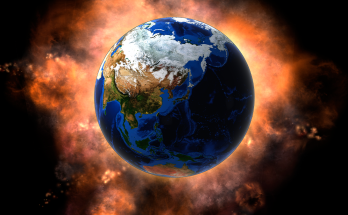It’s been a big week for space travel, and did anyone have Katy Perry flying to space on their 2025 bingo card?
Jeff Bezos’ Blue Origin flight entered the history books with the first all-female flight since Valentina Tereshkova’s 1963 solo mission, boasting a crew of wonder women that included Perry, journalist Gayle King, aerospace engineer Aisha Bowe, research scientist Amanda Nguyen, businesswoman Kerianne Flynn, and his fiancée, Lauren Sánchez.
As Jeff Bezos and Elon Musk continue to try to conquer space, Blue Origin is leading the way in so-called space tourism.
Having already sent Star Trek‘s William Shatner to space as the world’s oldest man, the company is pioneering the way with the all-female crew and is showing how viable the idea of sending civilians to the cosmos really is.

There’s been plenty of controversy, with Olivia Munn calling it gluttonous and numerous other celebrities slamming the mission at a time when the money could be spent solving some of the world’s many problems.
Although it’s not been revealed how much the crew paid to be on the 11-minute NS-31 trip, previous tickets went for around $28 million, and they were actually only in space for around four minutes, so it continues to be a point of contention.
Elsewhere, the New Shepard rocket is supposedly green, with Bezos claiming it doesn’t have any carbon emissions.
As pointed out by the BBC, experts say it’s ‘not possible’ for the rocket to only emit water vapor.
Drilling down into the potential environmental cost of the celebrity-packed trip, one atmospheric chemist told the outlet how anything that combusts at a high temperature converts nitrogen that’s already in the atmosphere into harmful nitrogen oxide gases that can damage the ozone layer.
As a reminder, the ozone layer is the layer that protects the Earth from the Sun’s radiation and sits high in the atmosphere.
Correspondent Victoria Gill also points out how water vapor itself is considered a greenhouse gas and shouldn’t be in the upper layers of the atmosphere.
Gill says we inadvertently put it up there when we send a rocket into space. Saying it’s important to remember that rockets continue to release their emissions throughout their flight and into the different layers of the atmosphere as they stick around for a lot longer.
Due to the (lack of) weather, you don’t get rain 100km above, meaning the pollutants can’t be washed to the ground.
Even though it’s true that there are a lot more international flights every year that contribute to carbon emissions, scientists reiterate that it’s all about where the emissions are released that are doing the real harm.
Despite the whole flight only taking 10 minutes and 20 seconds, it’s suggested that the April 14 flight doesn’t quite have the green credentials that Bezos claims it does. Bezos has previously been called out for the carbon emissions pumped out by his private jets, but that’s apparently nothing when compared to launching a rocket.



